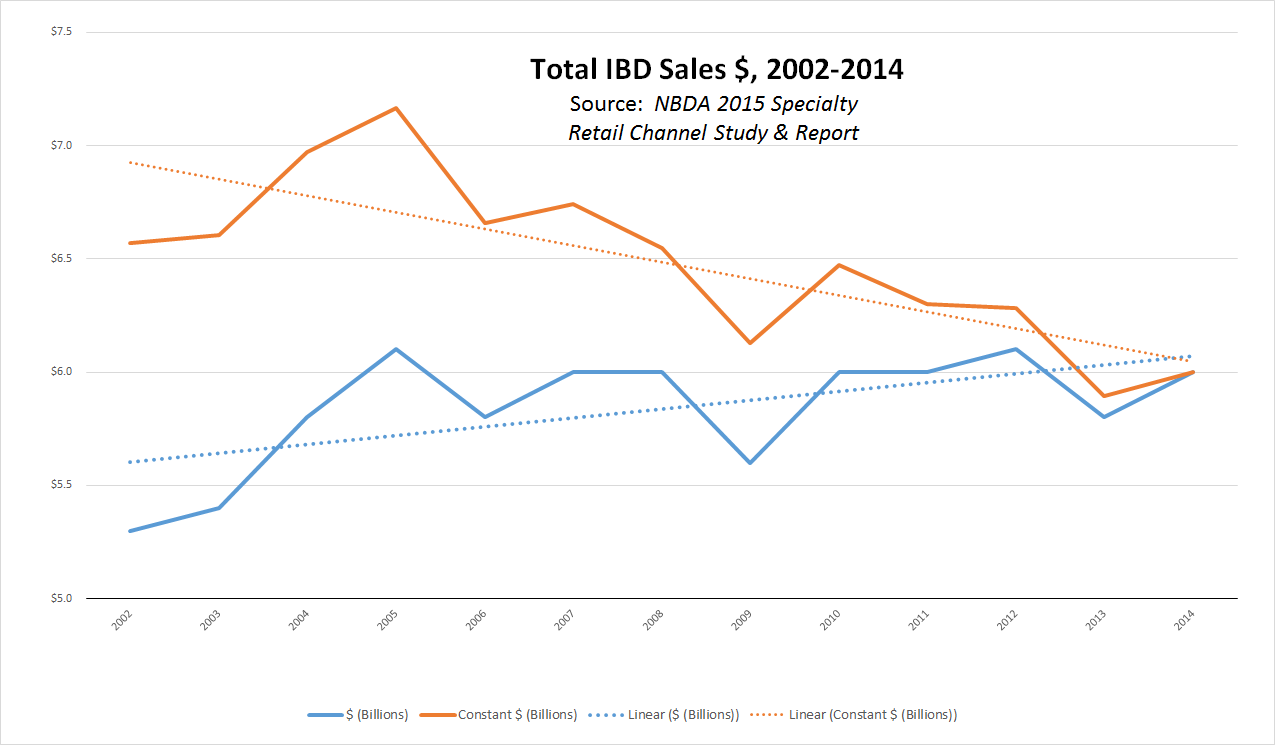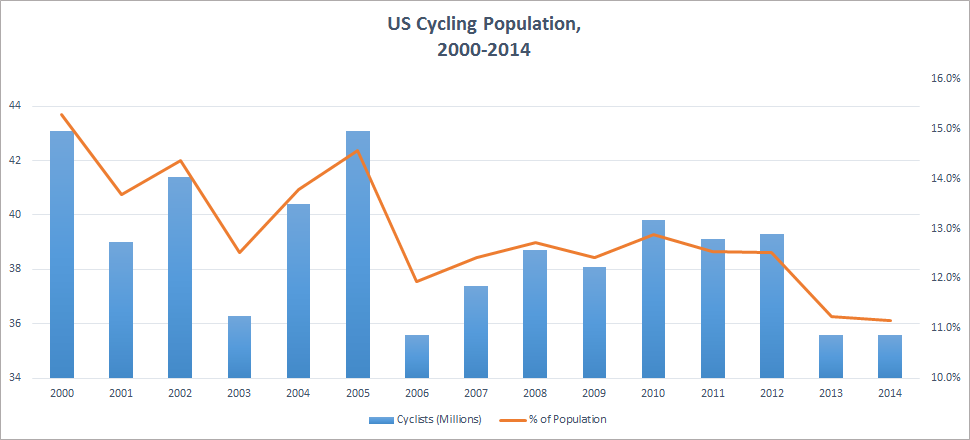Last time we looked at how popular media turns cycling deaths into a thing of sound and fury, a blood-soaked circus sideshow of fear and hysteria. And how, by extension, the same media reports convince the public that riding a bike is the most dangerous thing you can do short of juggling live chain saws in front of an audience, naked.
This time, we're going to look at how the ghosts of those dead cyclists directly — or not so directly — haunt the bike business. Starting at the bottom line.
Note: a consumer-level version of some of the following material appeared in a slightly different form on the website Red Kite Prayer in the feature "Where Have All The Bike Shops Gone?"
Let's start by getting a couple of very important things straight.
Sales are flat, we say. "Flat is new Up," we joke.
Flat is not the new Up. If anything, Down is the new Flat.
No it isn't. If anything, Down is the new Flat. Because gross dollars in the bike business aren't flat. In fact, the notable success of some large suppliers and savvy retailers notwithstanding, gross sales have been in modest decline for at least 12 years. Let's take a look:
In the chart below, the blue line at bottom shows the actual NBDA numbers reported for bike shop revenues from 2002-2014. As you can see, the dotted trend line shows a business that's perking right along — slightly better than flat. From 2000 to 2012, sales rose from $5.3 to 6.1 billion, a net gain of just over 13 percent, or just about one percent per year, for a total gain of $700 million.

At least that's what we tell ourselves.
And that would be the case, too, except for the effects of inflation. A dollar in 2000 was worth about 24 cents more than a dollar in 2014. And that's where that ominous-looking orange line comes in. Measure the same industry sales numbers in constant (2014) dollars, and retail revenues went from $6.6 to 6.0 billion, a 9 percent loss, or an average of three-quarters of a point per year.
That's not exactly an industry death-knell, but it's not time to break out the champagne, either.
So, what does a $600 million loss over 14 years have to do with news accounts of cyclists dying, entirely too frequently and in various horrible ways?
Let's put it this way. All those lurid accounts of cycling deaths certainly aren't helping business. But they just might be one cause for the loss of more than half a billion dollars worth of revenues between 2000 and 2014.
Let's look at it from a different perspective:
One of the two ultimate drivers for the bike business is the number of cyclists. (The other, of course, is how much money those cyclists spend, which was the topic of the previous chart.) In 2000, according to the NSGA, just over 43 million Americans rode bikes on a regular (six or more days per year) basis, already a 23 percent drop from the peak year of 1995. Over the next 14 years, 2000-2014, that number dropped by another 17 percent — from 43 million in 2000 to just 36 million last year — an incremental loss of 37 percent in 14 years.
On a per capita basis, one-quarter of all American cyclists have quit riding in the last 20 years.
Or, to put it even more bluntly, seven and a half million Americans have stopped riding bikes since the start of the GW Bush administration.
As with sales dollars, the loss of cyclists has (until recently) only been shown as static numbers. However, just as the value of money continues to shrink over time, the U.S. population continues to grow.
When we correct for population growth, the percentage of Americans riding bikes in 1995 was more than one in five — 21 percent. By 2000 it had dropped significantly, to just 15 percent. From there to 2014, it continued to decline to 11 percent, or just more than one in ten. So it is absolutely correct to say that only three-quarters as many of us are riding bikes as 20 years ago. In other words, on a per capita basis, one-quarter of all American cyclists have quit riding in the last 20 years.

If declining sales and an eroding customer base aren't cause for concern in the bike business, I'd sure like to know what is.
Of course there are plenty of other elements impacting cycling participation, from video games to climate change to lower fuel prices. The difference is, as an industry we can do something about the perception that cycling is nothing other than death on two wheels.
Next time, Confronting the Ghosts: Banishment and Renewal





